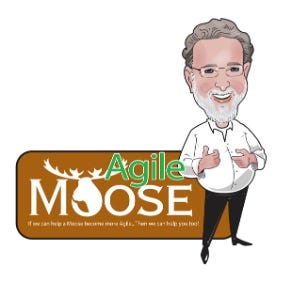I was struck by Simon Powers’ newsletter entitled—
DC59: How Training from the Back of the Room (TBR) changed the way agility was taught
And pioneered a shift across the whole of learning and development
It gave a lovely historical review of TBR, its value, impact, and evolution as a de facto training standard in the agile community (and beyond).
I recall it unfolding exactly as Simon describes and taking the Agile training world by storm, particularly the iCAgile and Scrum Alliance CST worlds.
In 2016, I attended a TFTBOTR class myself. While I appreciate the approach, I never went “all in” like my colleagues did. Instead, I used the learning to augment my training approaches.
But
Simon’s article made me reflect on the history of agile training and some of my reactions to what was emerging. So, I want to shift the discussion.
In 2018, I wrote this piece about the defamation of PowerPoint in the agile training community. I hold to this same position today.
And in 2019, I wrote this piece again, focusing on training approaches in our community. I was looking for a more balanced approach. A strategy that focused more on the instructor sharing their direct experience as the prime directive.
What’s Next
But here’s the real point I wanted to get to…
Suppose the TFTBOTR and other approaches were so great during the past decade. Why are we experiencing so many layoffs, reorganizations, challenges with agile transformation, and sad stories right now?
I think the training, all of it, wasn’t as great as the instructors thought it was, and the many resulting certifications didn’t prepare people for the real world.
A new metric for training success
We need a new metric to define what a successful training class looks like. It’s not—
The class was excellent,
Or, wow, TFTBOTR changed the learning dynamics,
Or, did we play a lot of games,
Or did the students leave incredibly excited,
Or, did the instructor receive all 10s from their student evaluations,
Or…
None of those matters. I’m thinking of a measure along the lines of—
Did the training better position the students to survive and thrive in the real-world business communities where they would be operating with their new skills? Both now and into the future?
If this is the metric, then much of the agile training hoopla, including TFTBOTR, might not have fared as well as we thought it did.
And most importantly, do we need to look in the mirror and change some things in our Agile trainers and training strategies? I wonder…
Stay agile, my friends,
Bob,
By the way, this post does not undermine any of Simon's points regarding TFTBOTR. It was a fundamental shift in our training approaches. It’s more focused on the big picture of how we measure the success of our training impact in the future.
Whatever your role or experience, life in the agile space can be challenging today. Having someone to serve as your coach, as a sounding board, be a truthteller, and become a trusted partner on tap to leverage during those tricky bits can be helpful. That’s precisely where Agile Moose can help you.
We’re not just an Agile Coach, but a business domain expert, a personal advisor, an organizational design and development consultant, and a leadership coach and partner.
The moose brings over 35 years of technical and product leadership experience across a broad range of contexts. If you’re stuck and know it, reach out, as I can help.






It's an interesting topic, and a nice read, thanks Bob! On reading this, I'm thinking about 'framework blindness' as a metaphor. Similar to snow blindness, a painful, temporary loss or impairment of vision due to overexposure of the eyes to ultraviolet (UV) radiation, typically reflected off snow or ice.
Framework blindness can be a temporary impairment of perspective, due to overexposure to an approach that we really like, reflected off the pretty, positive, short-term impacts...
At the end of the day, we’re all interrogative by nature—driven to ask, explore, and make sense of what’s around us. That’s why having a real coach to think things through with is such a gift.
Being Agile isn’t just about frameworks—it’s about adopting a way of thinking. Scientific thinking, in particular, helps us test assumptions, learn from experiments, and adapt with purpose. But that mindset isn’t always intuitive—it has to be taught, practiced, and nurtured.